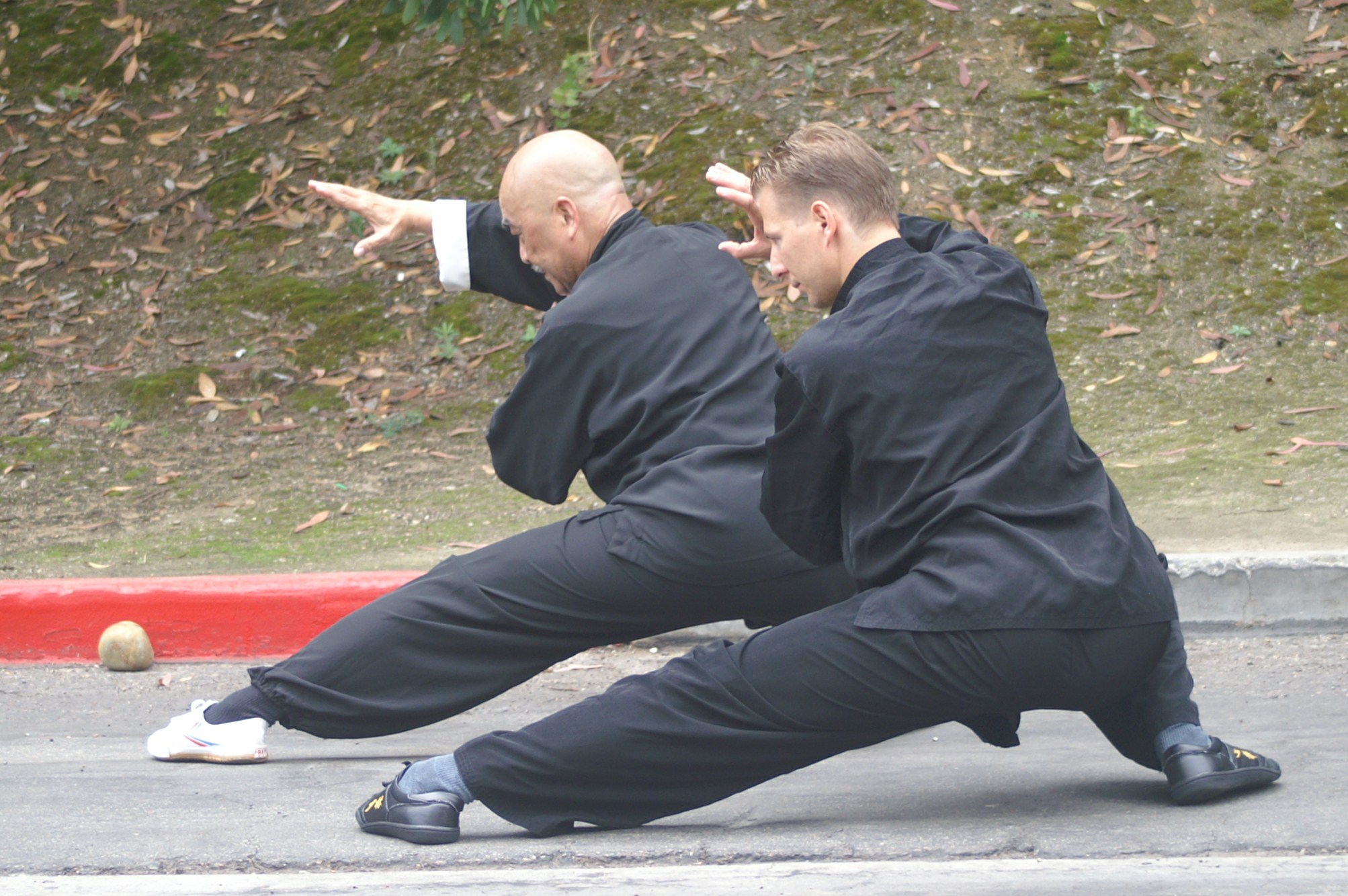The cornerstone of all martial arts is conditioning. Martial artists condition to be strong and flexible. Flexibility is vitally important for ease of movement and to prevent injury. Chinese kung fu is based on demanding stance work that requires flexibility of muscles, tendons and joints. Kicking maneuvers require the leg to be extended at high speed and different heights and from different angles which also requires a good amount of flexibility. The art of kung fu, including the ferocious tiger claw style, is based in grace and natural flow which is very difficult to achieve without fexibility. Kung fu conditioning begins with stretching to allow all of these martial things to happen more naturally and with less effort or ease of movement. There are two primary types of flexibility: one is arrived at while stretching with the meditative mind into deeply extended positions and eventually swinging the legs in a great an arch as possible; the other is achieved while simultaneously strengthening the muscle, known as synergistic stretching.
Fu-Jow Pai basic exercises make up a foundation upon which the style may be learned. These “tiger” basics combine stance training with extension or elongated movements. The legs are stretched while body weight is distributed over and through them in shifting stances. These are not static postures; they are dynamic movements designed to teach the student to generate power while moving from one demanding stance to another. Ultimately the student becomes proficient in moving smoothly and efficiently with less and less strain until he/she can generate power through the stances into the hands. Flexibility and strength in combination allow this phenomenon to happen. We call this, The Muscle Change – a Shaolin Temple concept.
Traditional stretching has you on the floor stretching in an array of positions designed to relax the muscle in order for it to be elongated with the tendons. In Fu-Jow Pai we use the meditative mind to facilitate this. Stretching can be a bit painful in the beginning with accompanying post workout soreness. The pain must be met with a sensible mind that would not allow the body to be pushed beyond its physical limits to a point of injury – yet also accepting that there will be discomfort. In time these discomforts disappear and stretching becomes pleasurable if not a transcendent experience as in Yogic practices, Shaolin kung fu being a byproduct of Yoga. Typical floor stretching should take no less than an hour and a stretching routine can take up to two or three hours when range of motion and standing stretches are added. Duration of a stretching routine can be shortened if in the middle of a session of basic training with good results. It is important to note that the body must be hot, totally warmed up before beginning stretching. Warm-up movements can be misconstrued to be simple and without substance; for instance: we use joint circles as part of a comprehensive warm-up. These simple movements are vitally important for joint health, especially where a striking martial art is concerned. The warm-up should produce sweat and target every joint and muscle group. Warm muscles stretch more easily and are less prone to injury. A superbly successful flexibility routine should culminate with full power movements done with ease.
Flexibility is relative to the individual. Not everyone will have magnificently extended kicks or super low stances and not everyone will be able to do perfect splits or back bends. Each person’s ligaments are different. Some people will find it almost impossible to become flexible. They should work within their limitations and strive to improve anyway. Some people are so naturally flexible that they will find it difficult to develop strength. These two circumstances are easily addressed with our synergistic basic exercises. Each will find their respective level more easily when training in Fu-Jow Pai basic exercises and conditioning.
Demonstration of Kung Fu Flexibility Combined with Strength
Julian K. Duran
